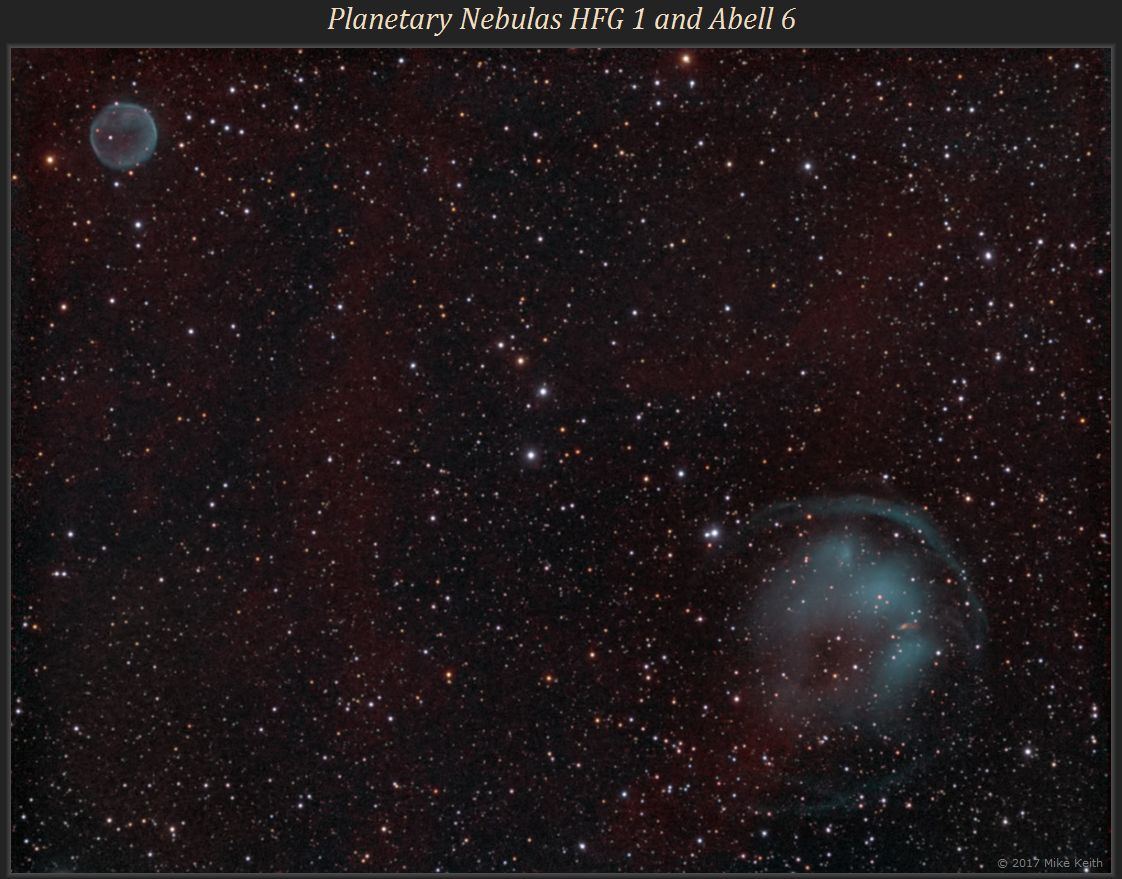
Click here for a higher-resolution image

Click here
for a higher-resolution image
By lucky happenstance this roughly 50' x 40' field of view (lying about 4 degrees northeast of the famous Heart Nebula) contains not one but two planetary nebulas, shells of gas ejected into space by a dying star. At the upper left is Abell 6, whose shape is the fairly common (for a planetary nebula) spherical bubble. By contrast, HFG 1 (discovered by Heckathorn, Fesen and Gull in 1982) has a complex and asymmetrical shape. It has been determined that HFG 1 is moving toward the upper right of the frame, which explains the blue-green arc on the leading edge of its movement, a "shock wave" analogous to the bow shock caused by a boat or an aircraft travelling through its medium. The small pinkish squiggle in the upper right portion of the main "body" of HFG 1 is distant galaxy LEDA 2797165 (= ZOAG G136.44+05.57).
Both Abell 6 and HFG 1 are extremely faint (especially HFG 1), almost invisible in both the POSS and SDSS survey images. To capture these objects, and the faint H-alpha nebula in the background, a total of 30 hours of exposure was used (15 hours of H-alpha and 15 hours of O-III).